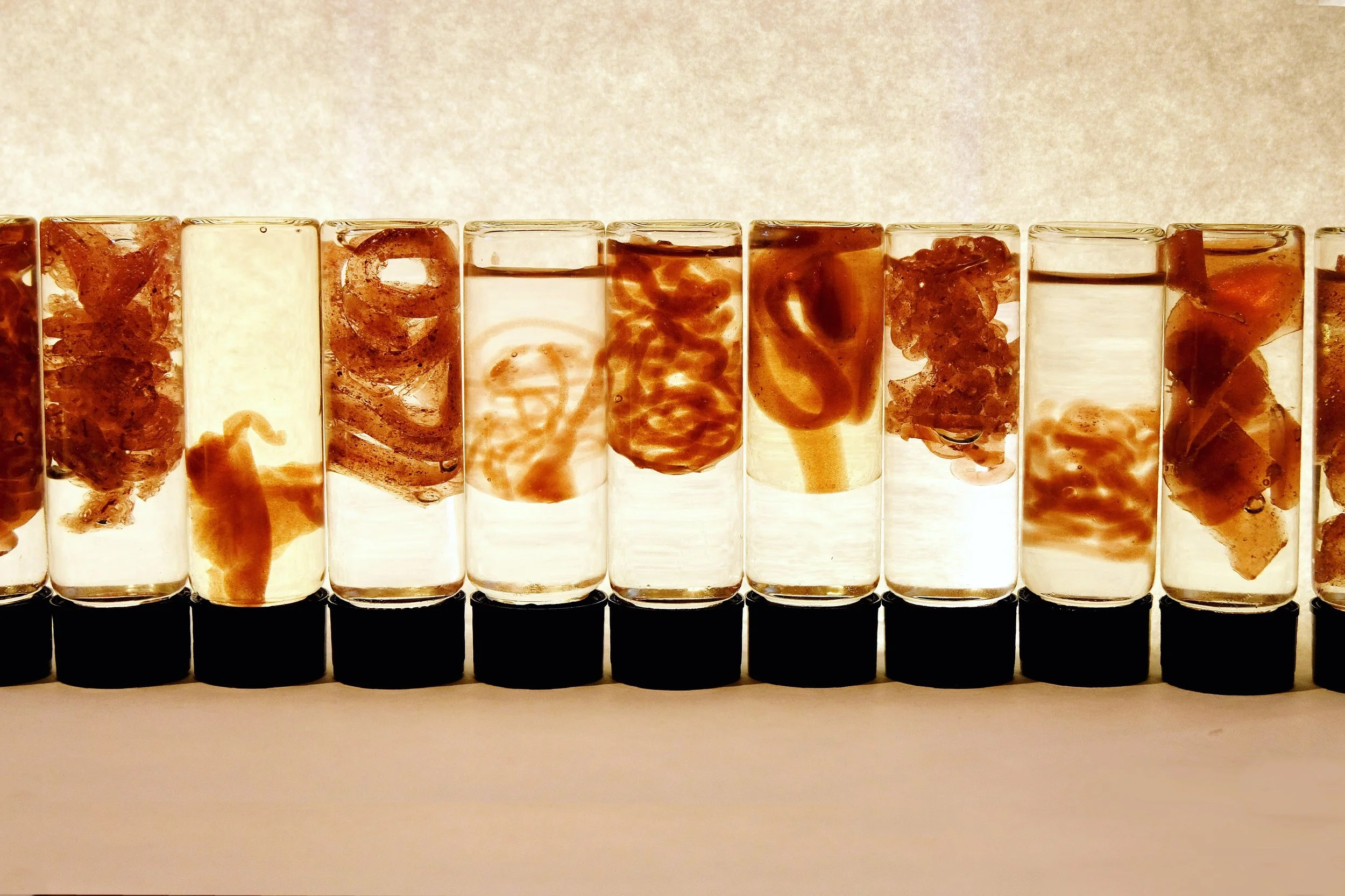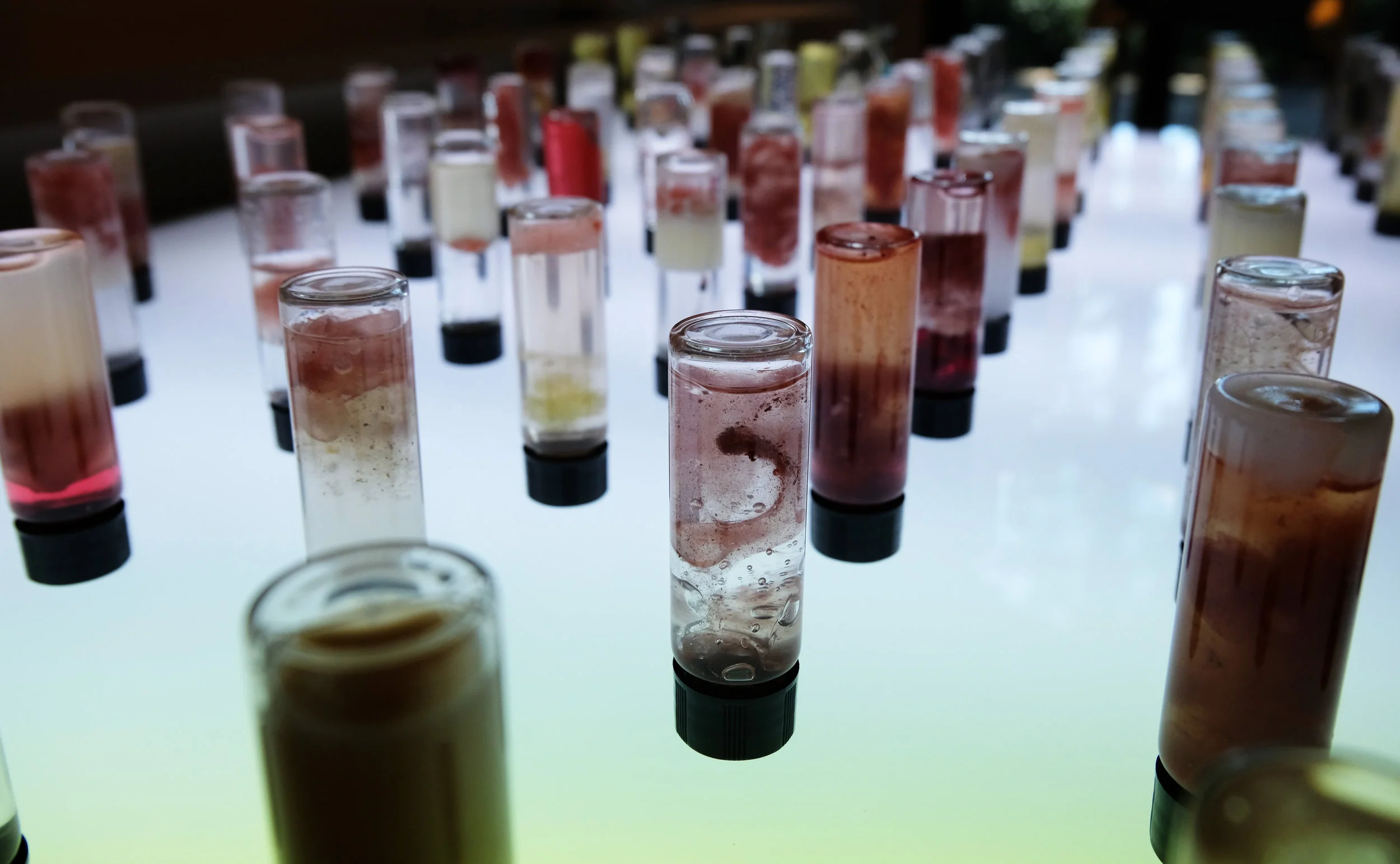A Taxonomy for Possible Consciousness
The portrait of an organic brain is dissociated into its elemental parts, juxtaposed with the materiality of a non-organic, computational brain. This new taxonomy investigates how merging and evolving technologies can alter people’s notion of sentience.
This piece was presented at the show BioDesign: From Inspiration to Implementation, Woods-Gerry Galleries. It was also presented at a symposium of the same name at Rhode Island School of Design, in conjunction with the Nature Lab. Some images from the opening:
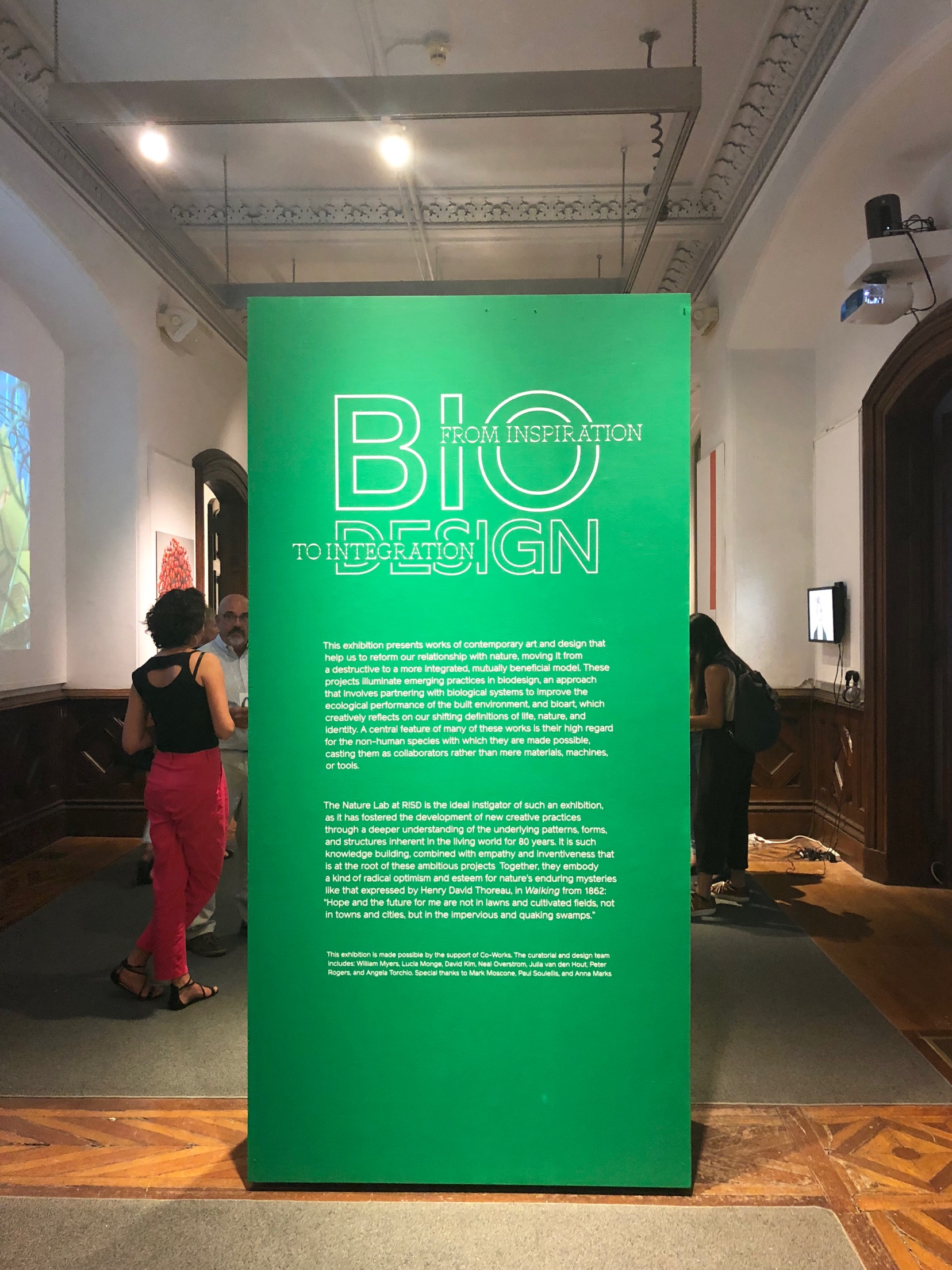
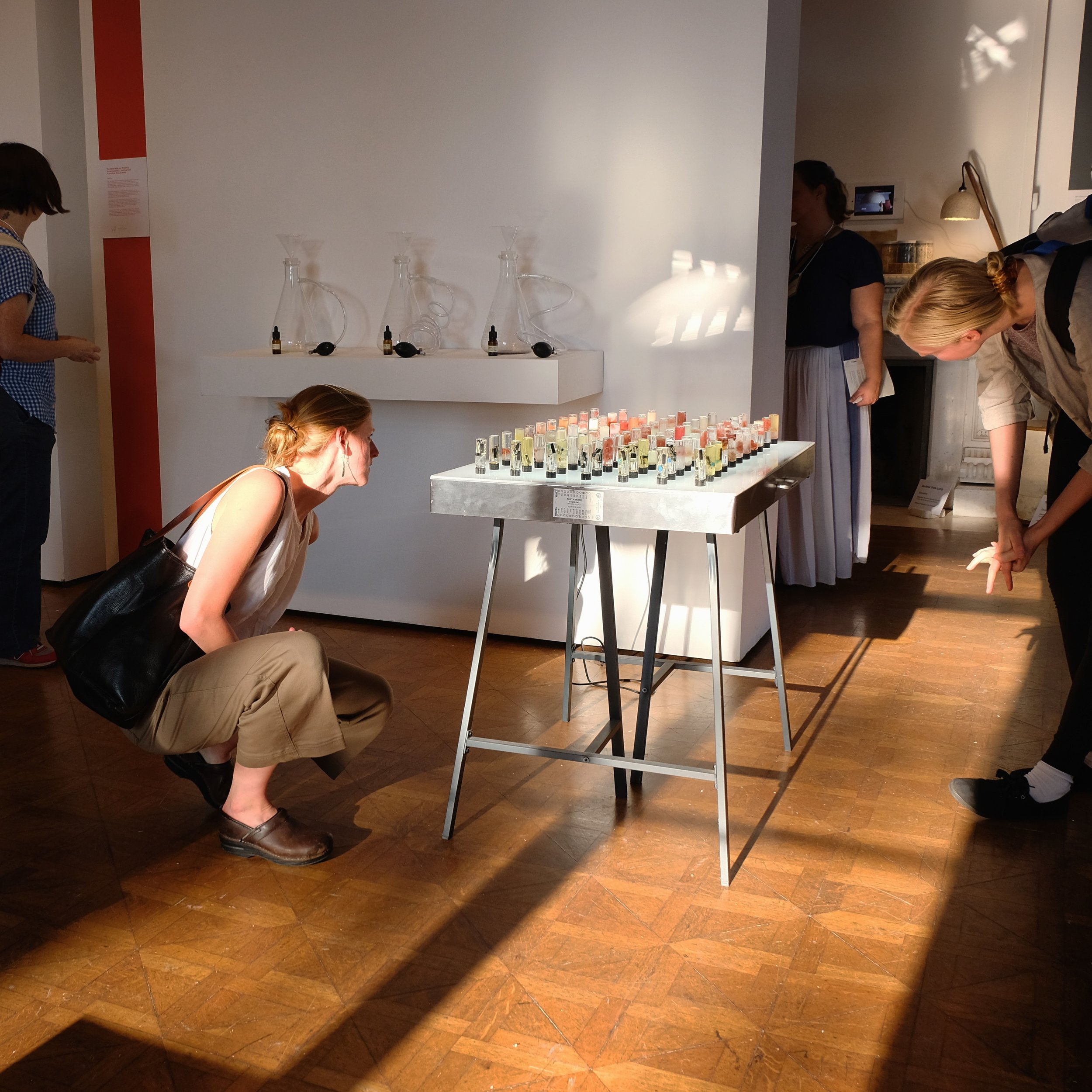
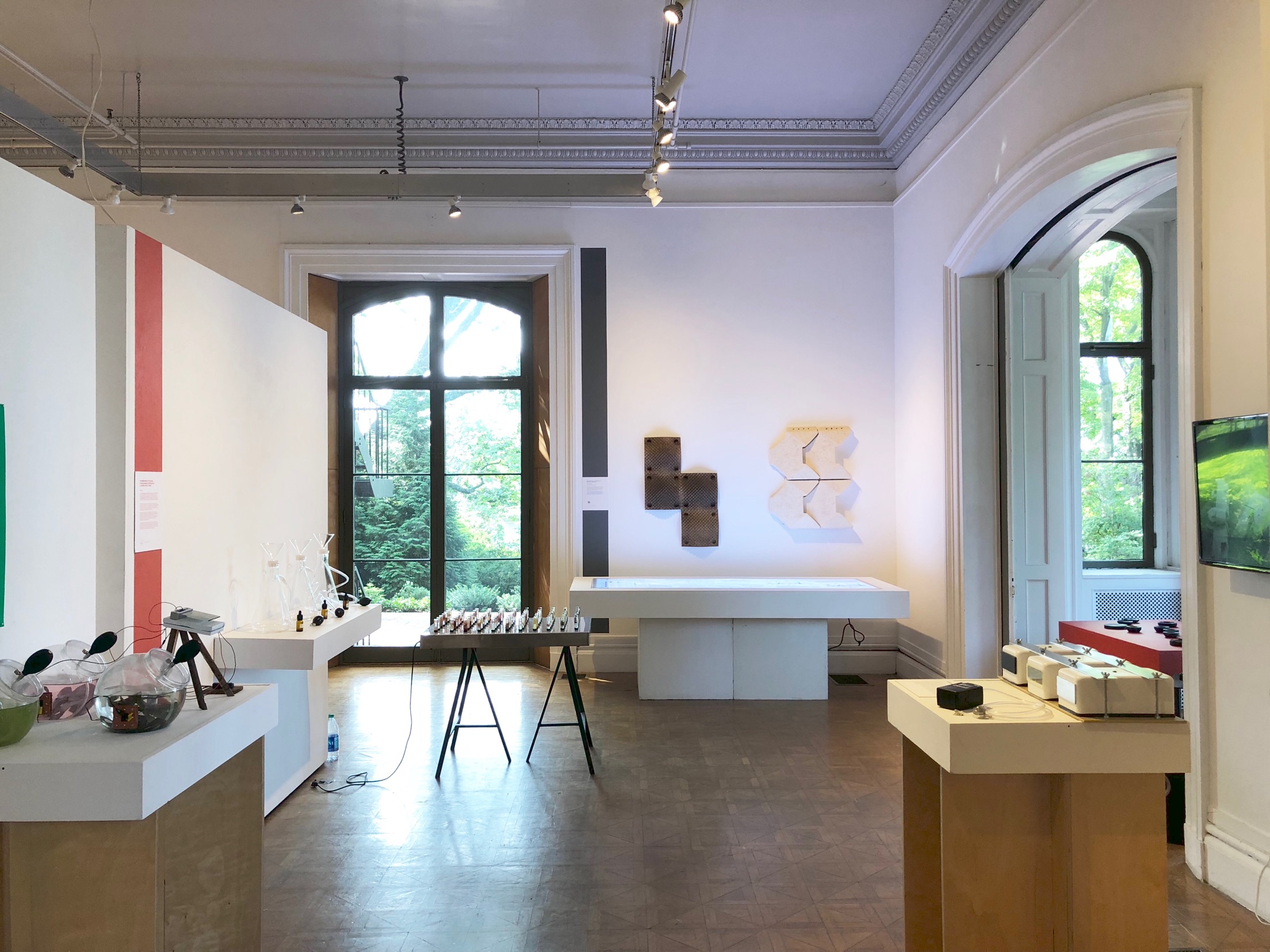
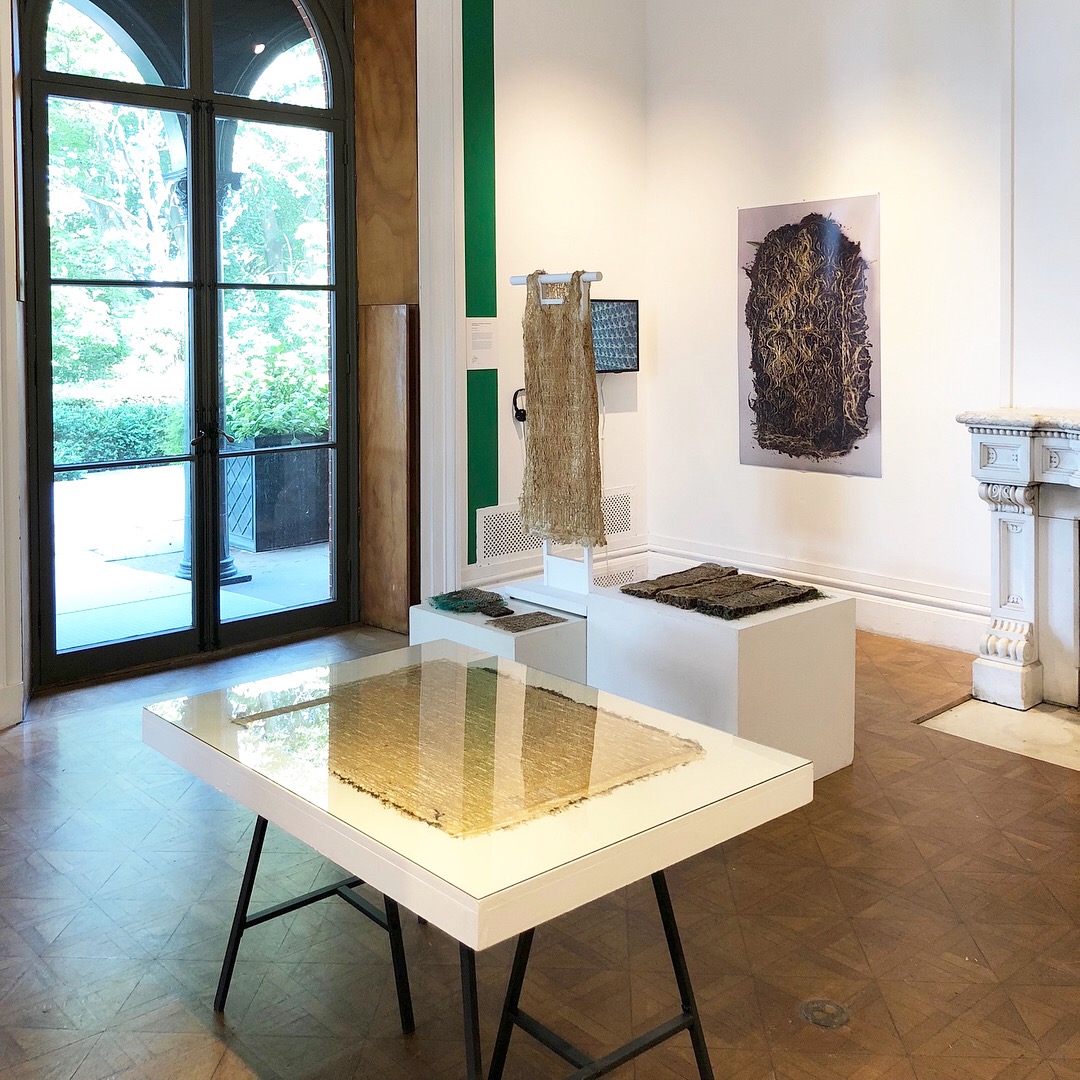
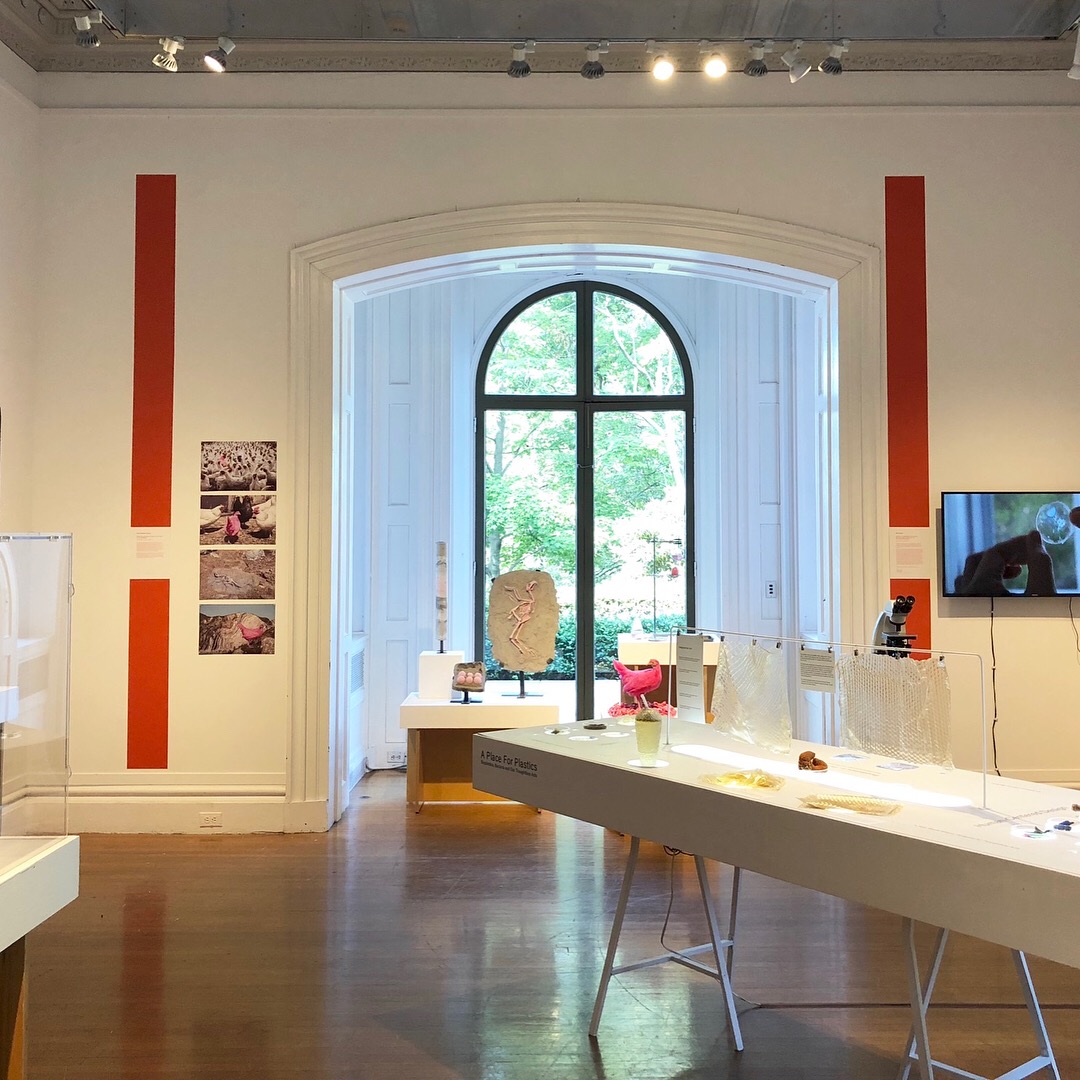
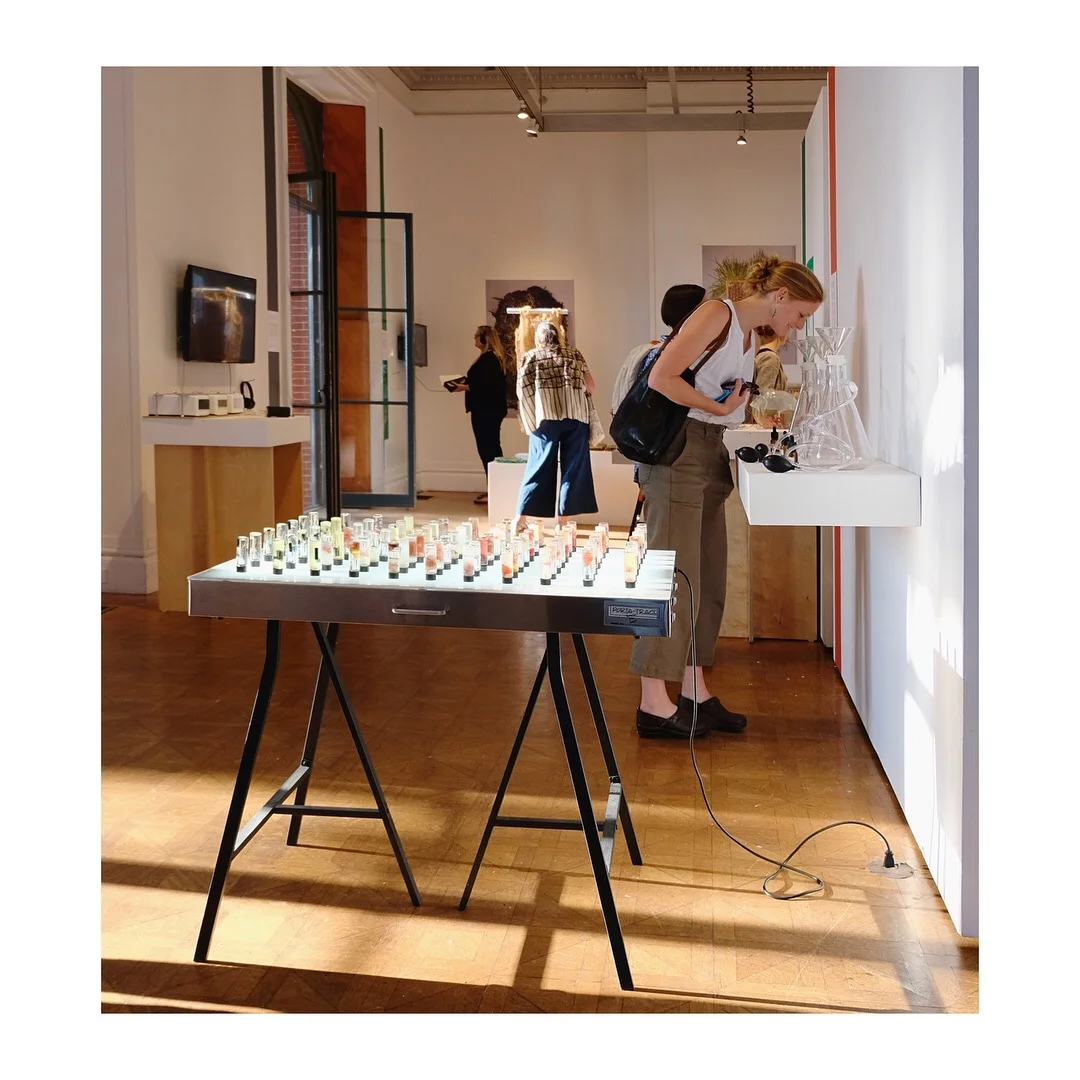
Where does the mind end and the body begin? How does sentience arise from materiality? Can non organic materials computationally create consciousness? Can the mind be reducible to signals? Can sentience be manufactured in a lab? This series explores our pulsating subjectivities as influenced by evolving technologies that challenge our notion of being sentient.
Exploring the philosophical themes of transhumanism, mind-body dualism, and ontology of the virtual, this project involves a series that explore how technology influences our notion of being sentient from different points of view, with a focus on exploring the relationship between our bodies as matter, and as data. The portrait of a body is disassociated into elemental parts: water, fat, protein, minerals, providing the viewer with an opportunity to viscerally confront the materiality of life and its existence, and perhaps make an analogy between us and other species, or us and a deconstructed machine.
medium
glass vials, materiality of a biological brain: fat, water, protein, minerals. materiality for a computational brain: various metals
dimensions
24” x 36” x 40”
year
2018
exhibitions
Nature Lab at RISD, Woods Gerry Gallery
DaVinci Festival, Seoul, Korea
tags
materiality, consciousness, dualism
